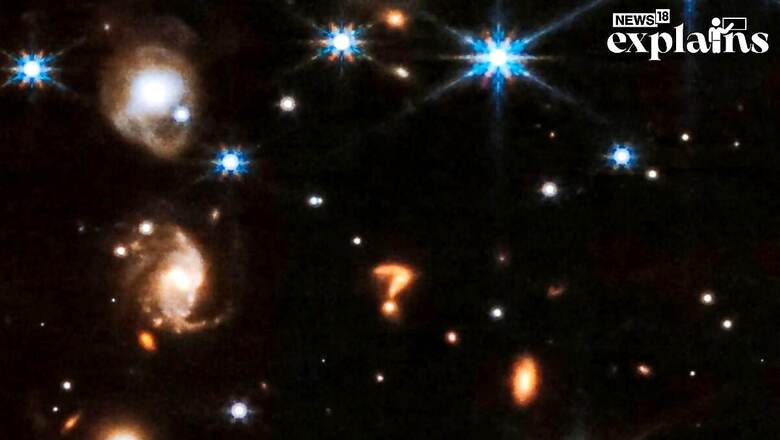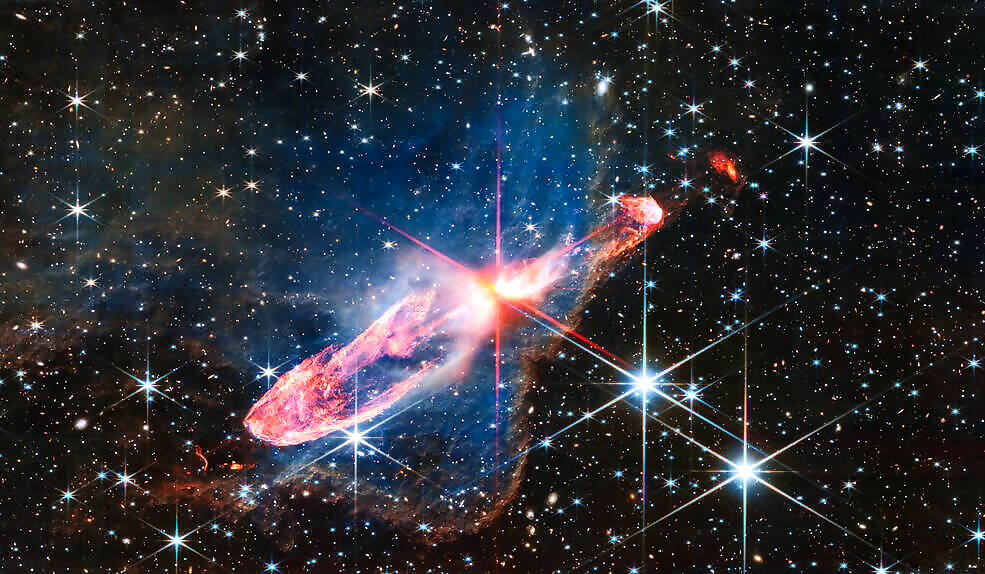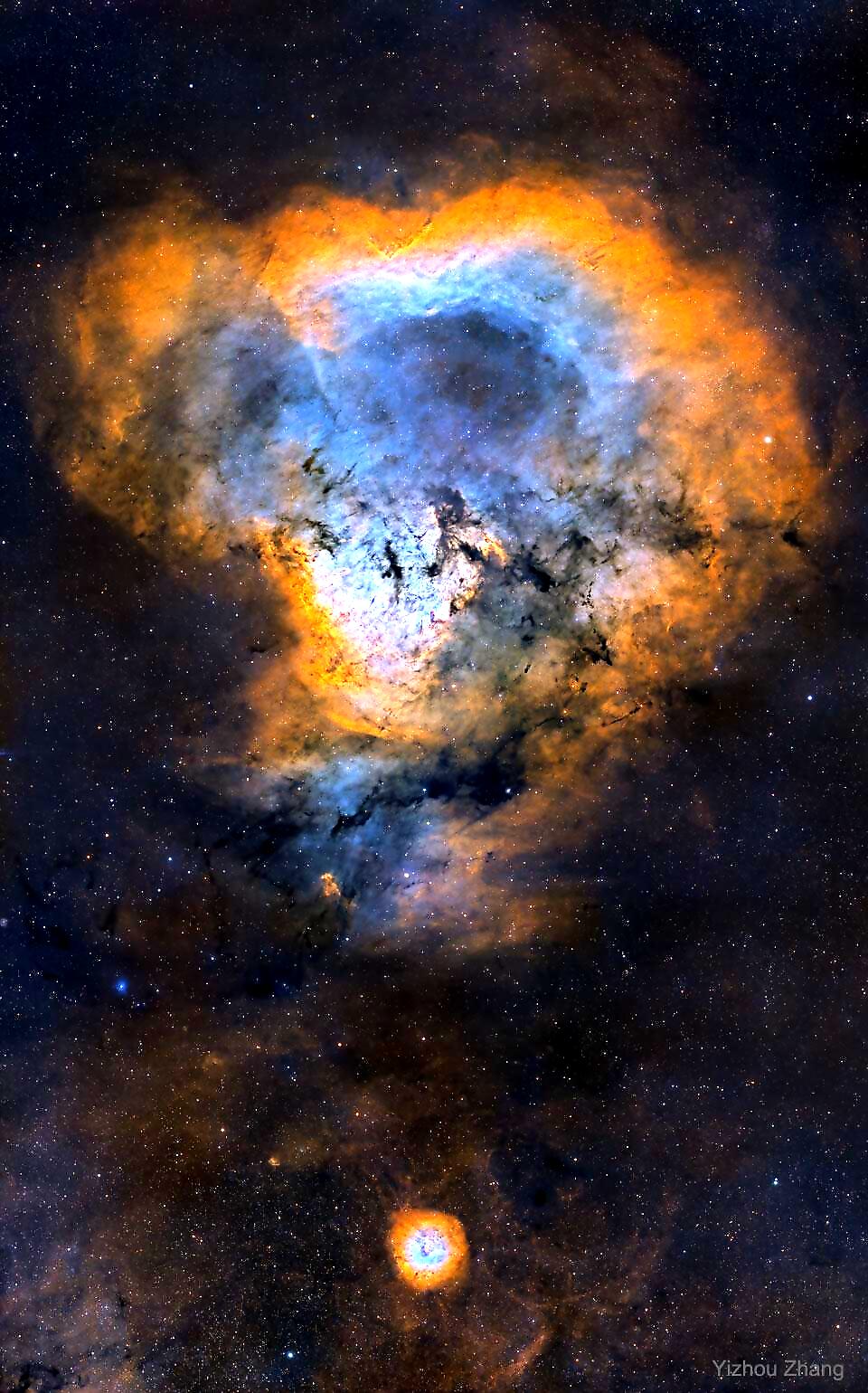
views
NASA has recently discovered a mysterious question mark shining among the stars throwing up more questions than answers about the space. The giant cosmic question mark was discovered in a high-resolution infrared image captured by James Webb Space Telescope (JWST) and released on June 26.
The image provides a detailed look at a pair of actively forming stars named Herbig-Haro 46-47 located 1,470 light-years from Earth in the Vela Constellation, according to Space.
The stars are buried deeply, appearing as an orange-white splotch. They are surrounded by a disk of gas and dust that continues to add to their mass, according to NASA.
What is the Giant Question Mark?
Days after the mysterious object was discovered in the image, scientists weren’t clear about the object’s origins and structure. Some believed that the distorted shape and red colour could be a distant galaxy or a pair of interacting galaxies.
“It is probably a distant galaxy, or potentially interacting galaxies (their interactions may have caused the distorted question mark-shape),” representatives of the Space Telescope Science Institute told Space.
According to reports, it may be the first time that the astronomers have spotted a cosmic question mark. The red colour of the object indicated that that whatever the object is, it is likely very far.

“This may be the first time we’ve seen this particular object. Additional follow-up would be required to figure out what it is with any certainty. Webb is showing us many new, distant galaxies—so there’s a lot of new science to be done!” the scientists added.
Mark Caplan, an assistant professor of physics at Illinois State University, said the two distinct features could be merging galaxies in the background.
“The very first thing you can rule out is that it’s a star in the Milky Way. Stars always have these really big spikes, and that’s because stars are point-like. It’s called diffraction from basically the edges of the mirrors and the struts that support the sort of camera in the middle,” Caplan said, according to CNN.
However, he said that if you look closely, “It tells you immediately that it’s not a star.” He added that the distinct upper part of the object could be “part of a larger galaxy getting tidally disrupted.”
According to Christopher Britt, education and outreach scientist at the Space Telescope Science Institute, it could be a merger of two galaxies that, at probably billions of light-years away.
“There are many, many galaxies outside of our own Milky Way. This looks like the kind of thing that you get fairly frequently — as galaxies grow and evolve over cosmic time — which is that they sometimes collide with their near neighbours,” he added.
About James Webb Telescope
Ever since the James Webb Telescope was launched by NASA in December 2021, it has been showing objects at astonishing distances from Earth. It has been designed to answer outstanding questions about the Universe and to make breakthrough discoveries in all fields of astronomy, the European Space Agency said in their website.
It was launched on an Ariane 5 from Europe’s Spaceport in French Guiana on the Christmas of 2021. Its high-resolution near-infra-red imaging allows it to peer into the far reaches of the universe, spotting galaxies as distant as 13.4 million light-years away. It can see infrared light that is invisible to the human eye.
It has helped to show that the galaxies in the first billion years of the universe were more active than previously thought, forming lots of stars in big bursts, according to The New Yorker.
NASA scientists have said that the telescope has performed not only better than requirements but better than we could have possibly dreamed.
Previous Question Marks in Space
This isn’t the first instance when a cosmic question mark has been spotted in the space. Earlier in October 2021, NASA released an image of a huge cosmic question mark NGC 7822 lies about 3,000 light-years away.

The latest question mark discovered while capturing Herbig-Haro 46 and 47 is only 1,470 light-years far.
The NGC 7822 was found in the northern constellation Cepheus, not far from the north celestial pole. The question mark appears reddish because it’s mostly hydrogen, which glows red when nearby stars energize it with ultraviolet light.

















Comments
0 comment